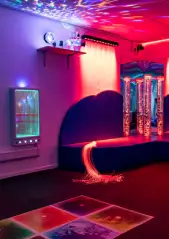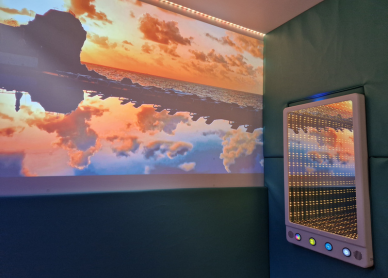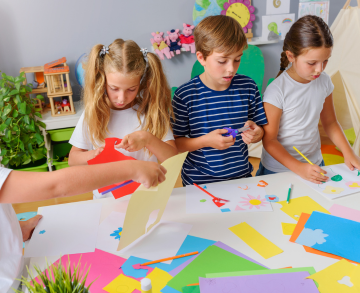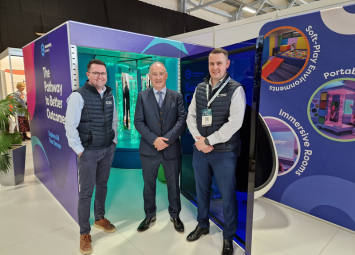We use cookies to make your experience better. Learn more
Arts
The Arts add a creative dimension to STEAM, helping students express ideas and approach problems from different perspectives. Whether through visual arts, music, or drama. Discover our resources to integrate the arts seamlessly into your curriculum.
10% Discount
Discover the Future of Education with STEM Learning
You may be familiar with STEM—an educational framework that integrates science, technology, engineering, and mathematics to prepare students for future success. But there’s a growing movement that takes this approach one step further: STEAM. This innovative approach adds the arts to the equation, blending creativity with technical skills to provide students with a more holistic education. As schools increasingly embrace STEAM, they’re discovering the unique benefits it offers.
What is STEAM?
STEAM stands for science, technology, engineering, arts, and mathematics. This educational model not only equips students with scientific and analytical skills but also encourages creativity and imaginative thinking through the integration of the arts. While STEM has been a cornerstone of education since its introduction in 2001, the STEAM framework, developed by researcher Georgette Yakman in 2006, is gaining traction as more schools recognise its value in cultivating well-rounded, creative problem solvers.
STEAM doesn’t just focus on traditional creative arts like painting, dance, drama, and music. It also encompasses other art-based disciplines such as languages, social studies, and humanities. The key difference between STEM and STEAM lies in their educational approach. STEM emphasises the technical skills necessary to tackle scientific and mathematical challenges, while STEAM adds a layer of creativity, encouraging students to think outside the box and experiment with innovative solutions.
The Impact of ARTS
STEAM learning aims to enrich traditional scientific and mathematical education by integrating artistic skills, which enhances creativity and problem-solving abilities. This approach not only strengthens critical thinking but also provides students with a diverse set of skills that span both the arts and sciences. Unlike traditional teaching methods, where subjects are often taught in isolation, STEAM encourages a more interconnected approach, promoting interdisciplinary learning.
Research supports the benefits of this approach. A 2016 American study found that students who received just nine hours of STEAM education showed significant improvements in their science performance compared to those on a STEM-only curriculum.
Moreover, STEAM learning promotes better communication and collaboration among students. The performing arts, such as dance and drama, help improve communication skills and self-expression.
The STEM Process
The Creative Activity - Senso Cube
NHS Supply Chain Reference: 2020/S 252-638069
No matter what subject you teach, you can follow a straightforward six-step approach to delivering a STEM-based lesson.
This convenient process serves as a guide for planning and conducting your STEM lessons while applying the STEM methodology. Let’s explore each step.
- Focus
- Detail
- Discovery
- Application
- Presentation
- Link





Focus
Start by selecting a specific question to explore or a problem to tackle. It's crucial to ensure that the chosen focus is clearly connected to the core STEM subjects and can be effectively addressed through the integration of Arts standards.
Detail
Next, pinpoint the key factors contributing to the problem or hindering the solution. As you analyze these factors, you'll begin to see the advantages of an interdisciplinary approach—drawing on skills, knowledge, and experiences from various subjects.
Discovery
In the discovery phase, research and targeted instruction are essential. Students should investigate existing real-world solutions that are not fully effective and explore emerging alternatives. As a teacher, this is the time to identify the processes and skill gaps that need to be addressed to guide students toward a viable solution.
Application
In the discovery phase, research and targeted instruction are essential. Students should investigate existing real-world solutions that are not fully effective and explore emerging alternatives. As a teacher, this is the time to identify the processes and skill gaps that need to be addressed to guide students toward a viable solution.
Presentation
Once the solutions are developed, students should present their work and engage in evaluation. This stage provides valuable feedback and encourages students to actively participate in the evaluation process, an essential component that contributes to their overall learning experience.
Link
In the final stage, students reflect on the feedback they received and their own experience throughout the process. They should consider what they learned, what they might do differently next time, and whether their solutions were successful. This reflection helps them refine their thinking and improve future problem-solving efforts.
Our latest innovation in sensory solutions
Struggling to find a dedicated sensory room?
Finding a dedicated space for a sensory room can be a challenge, but with our modular sensory rooms, creating a serene, controlled environment is easier than ever. Our senso cubes are designed to be as small as 2m x 2m, making them perfect for even the most limited spaces. Enjoy a quiet escape with our soundproof design, which ensures a peaceful environment free from external distractions.
Example 3D Designs
Key Features
The Senso Cube is an exceptional alternative to a traditional sensory room, offering an array of benefits tailored for environments where dedicated sensory spaces are impractical.
- Soundproof Design enhancement
- Modular & Portable Build
- Fully Bespoke Room
- Plug & Play Convenience
- Customisable Outer Panelling
- Suitable for Every Industry
- Wheelchair Accessible
- Hassle Free Delivery & Install
Sensory Hive
Our All-New Sensory Hive is a recent innovation from the team. The Sensory Hive is another mobile solution assisting in creating a sensory space within a larger open space. Featuring a fully padded, unique hexagonal shape, this Sensory Hive can be customised in many ways to suit the needs of your space
Key Benefits

Free Site Visit & Site Survey

Free 3D Room Design & Consultation

Dedicated Account Manager

Rapid Installation & Delivery
STEM Resources
Science
Science forms the foundation of STEM education, encouraging students to explore the natural world and develop critical thinking skills. Discover our resources to enhance your science lessons and inspire curiosity.
10% Discount
Technology
Technology in STEM empowers students to use tools and digital platforms to solve real-world problems. By integrating coding, robotics, and digital design into lessons, students learn to navigate and innovate within a tech-driven world. Explore our resources now
10% Discount
Engineering
Engineering in STEM challenges students to design, build, and test solutions to complex problems. It combines creativity with practical application. Access our resources to support your engineering projects and encourage inventive thinking
10% Discount
Arts
The Arts add a creative dimension to STEM, helping students express ideas and approach problems from different perspectives. Whether through visual arts, music, or drama. Discover our resources to integrate the arts seamlessly into your curriculum.
10% Discount
Maths
Mathematics underpins all STEM subjects, providing the tools needed to analyse data, identify patterns, and solve problems. Use our resources to make mathematics engaging and relevant in your STEM classroom.
10% Discount
SENSO CUBE VIDEO
At Procurex in the RDS, Dublin, we proudly introduced The Senso Cube. This cutting-edge solution is designed to create adaptable, immersive environments that cater to diverse sensory needs. Watch the video to discover how the Senso Cube enhances sensory experiences, promotes well-being, and offers unparalleled flexibility for various settings. Join us in exploring the next generation of sensory rooms!
Our Clients






Our Industries

Education

Healthcare

Community

Transport Hubs
struggling to find a dedicated sensory room?
Finding a dedicated space for a sensory room can be a challenge, but with our modular sensory rooms, creating a serene, controlled environment is easier than ever. Our senso cubes are designed to be as small as 2m x 2m, making them perfect for even the most limited spaces. Enjoy a quiet escape with our soundproof design, which ensures a peaceful environment free from external distractions.
10% Discount

Project Locator
See our list of sensory projects across Ireland & UK
10% Discount

Single image element

“Quote or testimonial goes here which is from client and usually over a few lines to attain feedback and add value.”
Person Name - Organisation
Senso Cube Video
Inside The Cube








FAQ's
What is a Senso Cube, and who can benefit from using one?
A Fully customisable, modular sensory environment aims to provide greater accessibility to multi-sensory environments in high volume community spaces including schools, hospitals, airports, hotels, restaurants, shopping centres, sports & recreational facilities and offices.
Whether it's providing a calming sanctuary for children with sensory sensitivities or offering a stimulating environment for adults seeking relaxation, our new Senso Cube can be fully adapted to meet the individual’s needs.
What features are typically included in a Senso Cube?
It can be quipped with various tools and objects that stimulate all the senses, providing a therapeutic environment for individuals with sensory processing disorders. These rooms often feature visual aids like bubble tubes and fiber optic lights, which create soothing light displays to captivate and calm the visual senses. Auditory stimulation can be provided through gentle music, nature sounds, or interactive sound panels, catering to auditory needs. Olfactory elements, such as scented diffusers or aroma machines, offer a range of calming or invigorating scents to engage the sense of smell. Tactile experiences are facilitated by textured surfaces, soft furnishings, and interactive panels that invite touch, helping users explore different sensations. Overall, sensory rooms are designed to offer a multi-sensory experience that can be both relaxing and stimulating, tailored to the unique needs of each individual.
How can I get one installed?
To get a Senso Cube installed, you can contact our dedicated sensory team who will guide you through the entire process. Our experts will offer personalised recommendations based on your specific needs and preferences. Additionally, we provide a complimentary room design and site survey consultation to ensure the room is tailored perfectly to your space and requirements. Reach out to our team today to begin transforming your environment into a therapeutic sensory haven.
Senso Cube
A completely customisable modular sensory space tailored to suit your environment, featuring a sound-proof design for a quiet experience, a plug-and-play setup for space-conscious areas, and customizable outer paneling to fit your branding.
See More Sensory Solutions...
Sensory Hive
Our All-New Sensory Hive is a recent innovation from the team. The Sensory Hive is another mobile solution assisting in creating a sensory space within a larger open space. Featuring a fully padded, unique hexagonal shape, this Sensory Hive can be customised in many ways to suit the needs of your space
Sensory Circuits
Sensory Circuits
Sensory Circuits offer numerous beefits by utilising existing spaces in corridors or areas outside of the classroom. Ideal for sensory stimulation and regulation as well as offering movement breaks for all students.
Featured Case Study
South West Acute Hospital in Enniskillen has redefined patient care in its Emergency Department (ED) by introducing a state of the art sensory room. This initiative, which recently won an award for "Low Cost High Impact" at the Design in Mental Health 2024 awards, showcases the transformative potential of sensory spaces in healthcare settings. This case study explores the collaborative efforts, challenges, solutions, and outcomes of this project, highlighting the critical role of sensory environments in enhancing patient well-being.
Logo









































